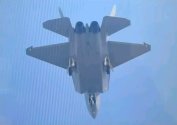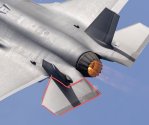interceptors got their bays before it went mainstream, in 1950s. It by itself doesn't make them multi-role, much like the existence of pylons doesn't make other fighters multi-role.Modern interceptors don't really exist because if it has bays, it can be a multi-role.
It's actually even more fun - because all USAF fighter aircraft back then, for some time, were interceptors with bays. And they thunderously lost to USN multirole birds.
Thus, while stealth is often brought in, the only USAF air superiority fighter since the mid-1950s to not feature bays was the F-15. Stealth or not, and without any multirole capability as a determining factor.
Interceptors are primarily defensive assets, trading normal combat capability for raw specs in order to timely react to the enemy initiative.But historically speaking, the interceptor mission means a plane with stronger air performance than the general fleet, often flown by elite units, tasked with hunting down the enemy's "best" air units. While air superiority is an aircraft that patrols airspace and escorts friendlies. Basically the distinction between Spitfires and Hurricanes.
That's why interceptors throughout history tended to lose to less impressive fighter aircraft over and over, and in general, are harder to apply. J-20 has interceptor qualities, but it is not one - and unless you want to gimp it, better not think of it this way.
And again.You can press gang air superiority fighters into interceptors and you can use interceptors to patrol air space. But pure fighters like J-10 or F-16 are not going to provide the same performance as say F-15, which leans more towards interceptor on the fighter-interceptor spectrum (or the J-20 and F-22, which are 5th gen versions of that). Using interceptors to patrol airspace represents a wasteful use of resources.
All 3 between J-10, F-16 and F-15 have interceptor missions between others. It's ironically only J-10 that actually have it among primary ones, which sort of invalidates your whole point.
F-16 has it secondary(and is not optimized for it at all), F-15, while not optimized either, somehow almost makes it through raw power.
But it should be remembered that is was not an interceptor, it specifically killed all US interceptors(and their new programs), and even F-15 NORAD variant was never allowed to be born.
Finally, patrolling airspace is an absolutely normal job for interceptors, just loitering subtype instead of point defense ones. The main aircraft family of PLAAF - flankers - were born very specifically with it as their primary purpose.
Last edited:



